Walnut Canyon — Pueblo Heritage Tour
…almost lost to overenthusiastic collectors …
This trip to Walnut Canyon was part of my girls’ trip to see Pueblo Heritage with Road Scholar.
I just love our national parks! There are so many spectacular and special places protected by the park system. Last fall I visited Walnut Canyon for the first time. Technically Walnut Canyon is a monument, but it is still under the umbrella of the National Park Service.
Start your visit to Walnut Canyon at the visitor center
The visitor center is chock full of information with artifacts, historical photos, interpretive displays and a video. It is a good place to start before you head into the canyon to get a feel for what you are going to see on the trail.


Photography Tip
Use a gradient filter on overcast days to help balance the bright sky and darker landscape. This will also help bring out some cloud details that would otherwise be blown out. I have even handheld my filter in front of my iPhone occasionally — it works great!
The ruins in Walnut Canyon were almost lost to overenthusiastic collectors in the 1880’s. The railroad gave souvenir hunters easy access to Walnut Canyon. Some even used dynamite to blast open dwellings to look for artifacts. At the time these practices were acceptable. But some locals, aware of what was being lost, acted quickly to stop the looting and in 1915 Walnut Canyon became a national monument. Today it is illegal to take or destroy any artifacts.
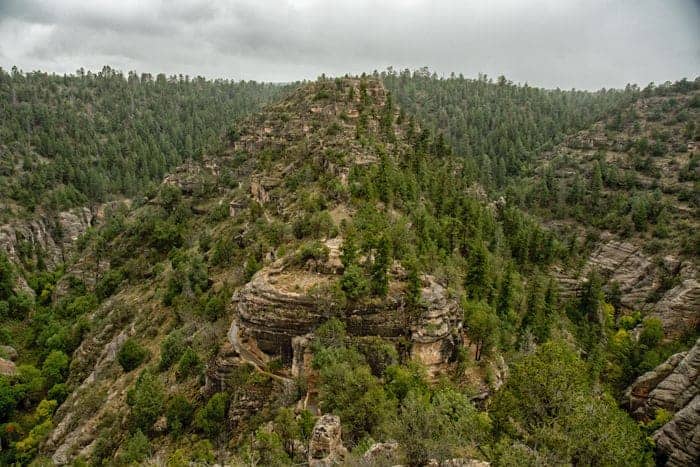
There is a path, called the Island Trail, connecting the museum to the canyon with a well maintained paved path. Trail traffic is directed to the right — there are narrow passages and one way traffic improves traffic flow. The trail forms a loop around a pinnacle and goes past several stone ruins — with views to quite a few dwellings on the opposite canyon wall! Despite that aggressive looting in the 1880’s there are still many well preserved stone dwellings. Some have been rebuilt and visitors can get a closer look at the details of construction.
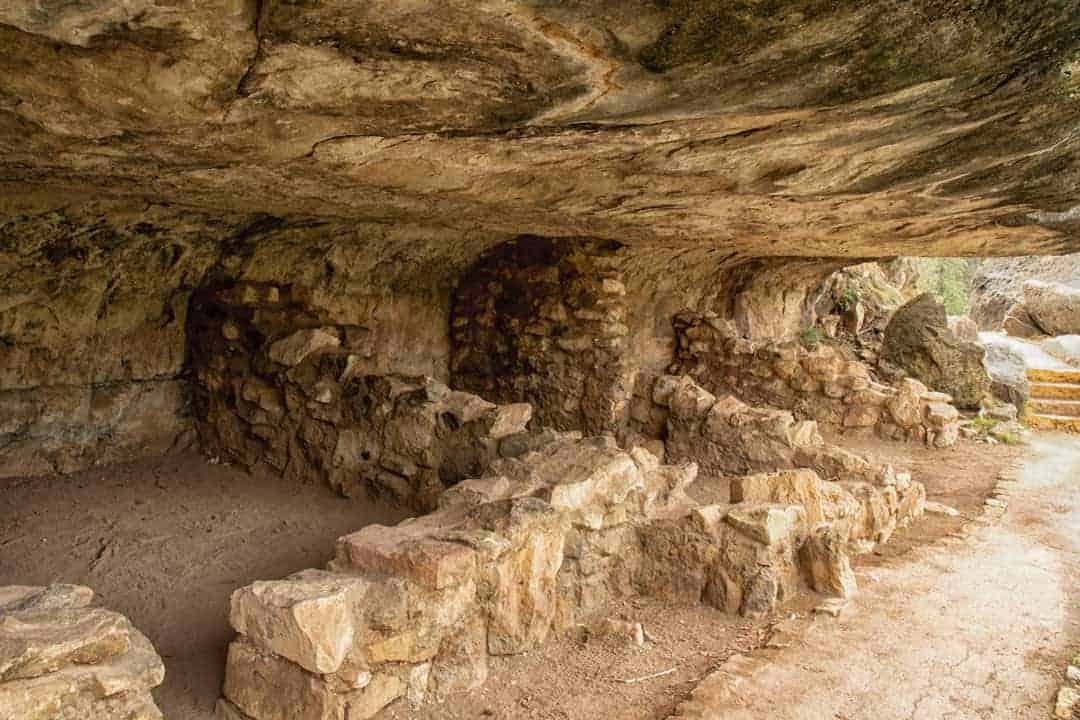
The dwellings are built from local limestone under natural ledges and included fireplaces, multiple rooms and low doorways. Most face south and east taking advantage of the warmth of the sun in that direction. The homes are hard to spot at first because they blend in so well with the surrounding landscape. We were exploring Walnut Canyon on a rainy afternoon. It was not hard to see how the ledges offered protection from the weather and created a natural path from house to house. As well as being protected and cozy there was a great view from most of the dwellings!

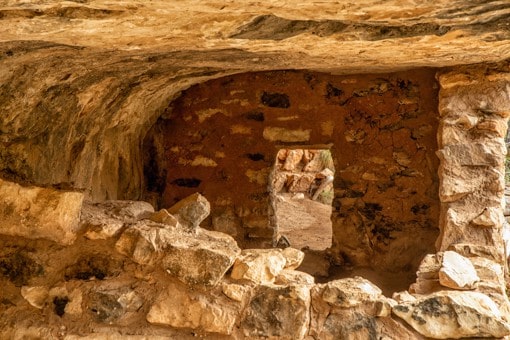
Follow the signs to get the full story on Walnut Canyon
There is some excellent signage along the path with great photos and illustrations telling the story of the Sinaqua people that lived here in Walnut Canyon between 1125 and 1250. Sinaqua is Spanish for “without water”.
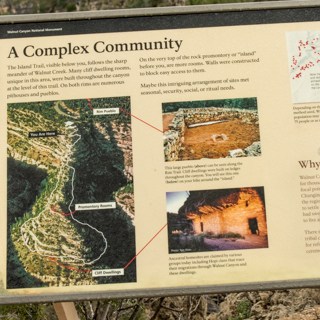
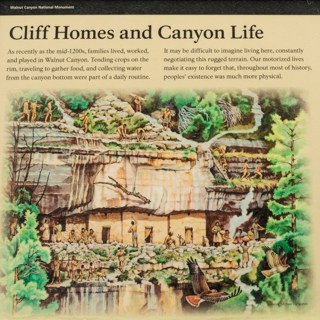
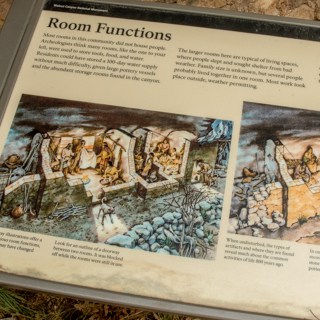
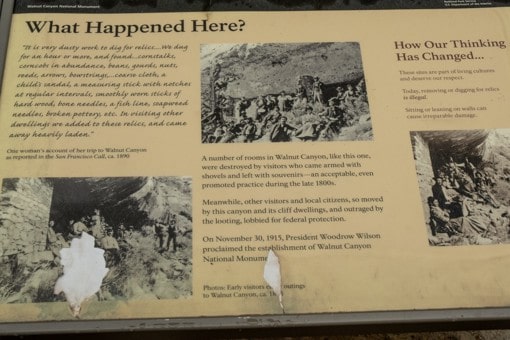
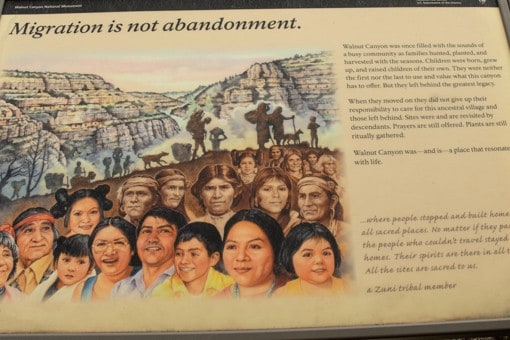
I can see the appeal of a canyon like this. It is beautiful! The only real drawback is you have to carry water up to your home, and the river doesn’t run year round. I wonder what kind of water storage they had. I should have asked a ranger about that — next time!
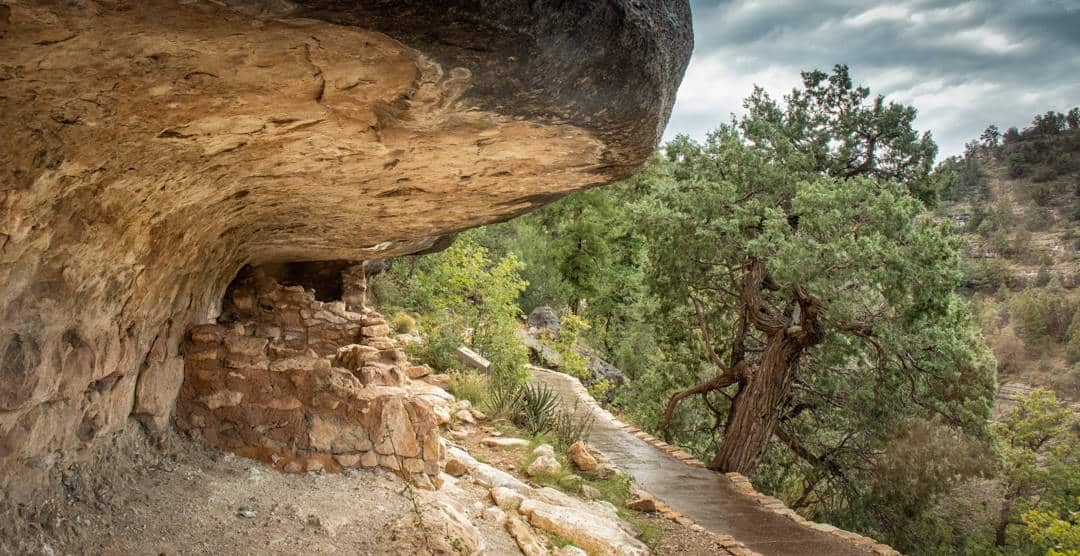
The buildings in Walnut Canyon were constructed by hand. Limestone rock walls were formed in naturally occurring shallow caves. The rocks were stacked and then cemented with golden-colored clay found in another part of the canyon. The biggest advantage of this location was one less wall and no ceilings to build — just three walls and a doorway and you are done!
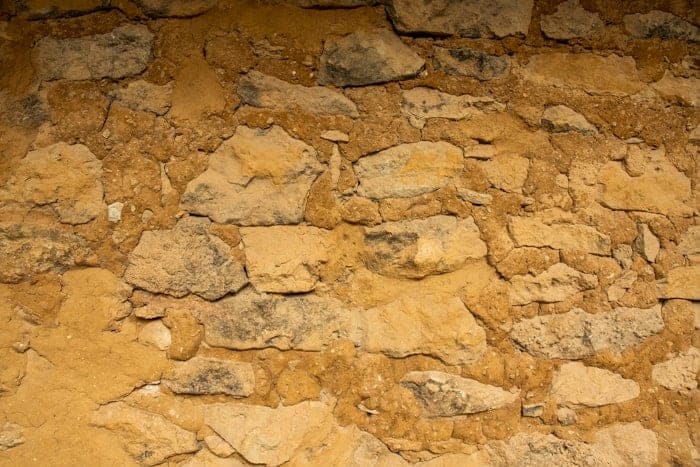
Looking for a one-of-a-kind gift?
I’ve got you covered with photo gifts that celebrate the beauty and diversity of nature and travel!
Unique photos taken from my travels around the world and across the street! Select images are available on high quality note cards, totes, mugs and more!
Check out both stores on Zazzle — Gifts for travelers and nature lovers, & Gifts for gardeners and flower lovers.
Thank you!
Plan your own adventure to Walnut Canyon
There are some steep steps, getting into and out of the canyon, that may be challenging for some people. Besides that, this is an enjoyable easy walk. I’d allow a couple hours to tour the museum and take the hike. There is a rim trail with great views for those that want to skip the steep stairs.
Walnut Canyon is located in Flagstaff. You can get more information from the National Park Service website here.
This trip to Walnut Canyon was part of a larger tour with Road Scholar. I would highly recommend this tour if you are interested in Native American culture. There was plenty of time to explore each location on the trip and interpreters at each location to share history and answer questions. Here are the specifics on the tour: Pueblo Heritage: The Anasazi, Hopi, Navajo and Chaco Canyon.
Enjoy the journey! Karin

Karin H Wilson
Artist | Designer | Photographer | Traveler | Storyteller
I am Karin and I just love to share a good story — preferably with snacks! I’m particularly interested in capturing the world’s beauty and wonder in photographs.
Recently I created Photos for Artists, packs of images for artists to use in their collage and art projects. You can find a detailed description and photos on my Footprints and Photos Etsy store.
Besides my blog, Footprints & Stories, you can also find my images on Zazzle products. I have two stores — one with Gifts for Travelers and Nature Lovers, the other with Gifts for Gardeners and Lovers of Flowers. Items include notecards, wedding invitations, tote bags, mugs, journals and more. Every product is backed by the Zazzle guarantee.
Please use the links provided as it helps me buy better snacks (and funds the website)!




